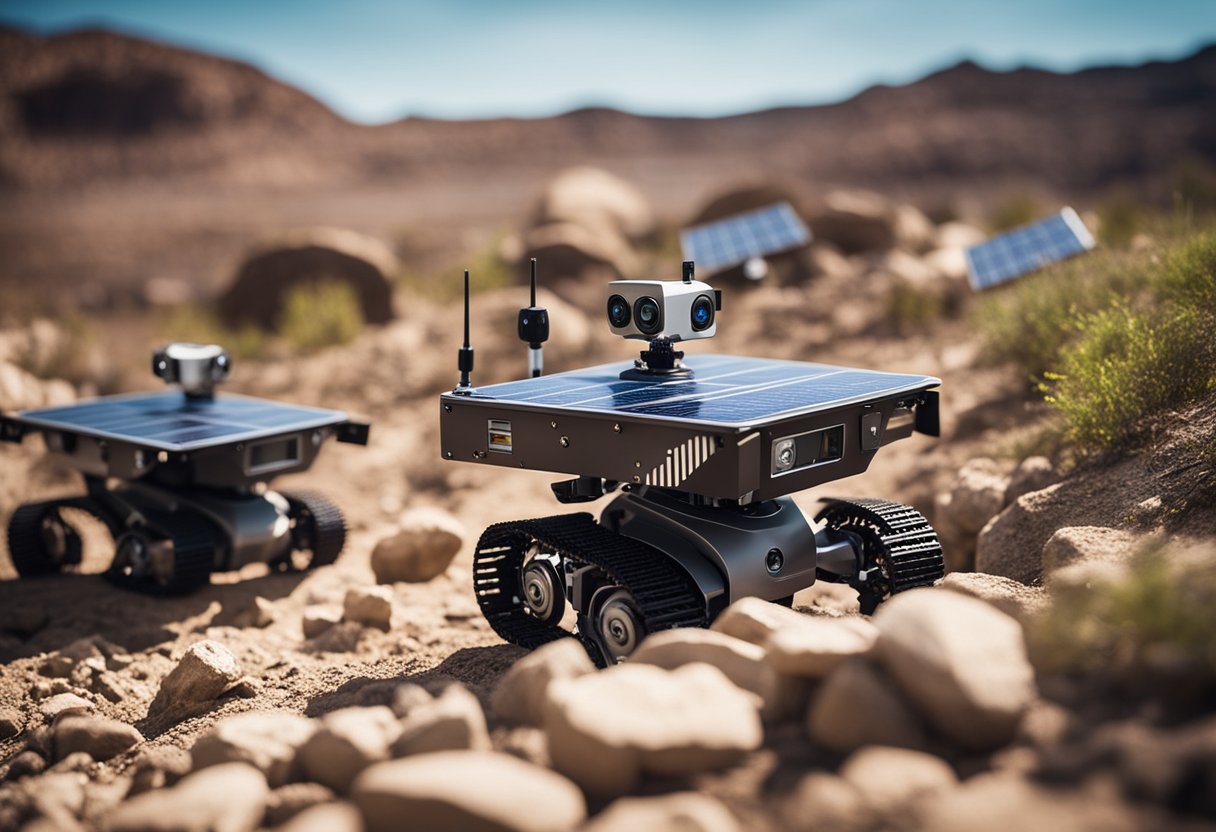
Space Exploration Robotics – Space exploration has been a testament to human ingenuity and curiosity, propelling us beyond the confines of our planet to uncover the secrets of our solar system and beyond. Robotic technology plays a pivotal role in this quest, performing tasks that are often too dangerous, dull, or distant for human astronauts. These robotic explorers, from landers that scrutinise the Martian soil to orbiters that map the outer planets, have expanded our understanding of the cosmos and have become instrumental in the search for extraterrestrial life.
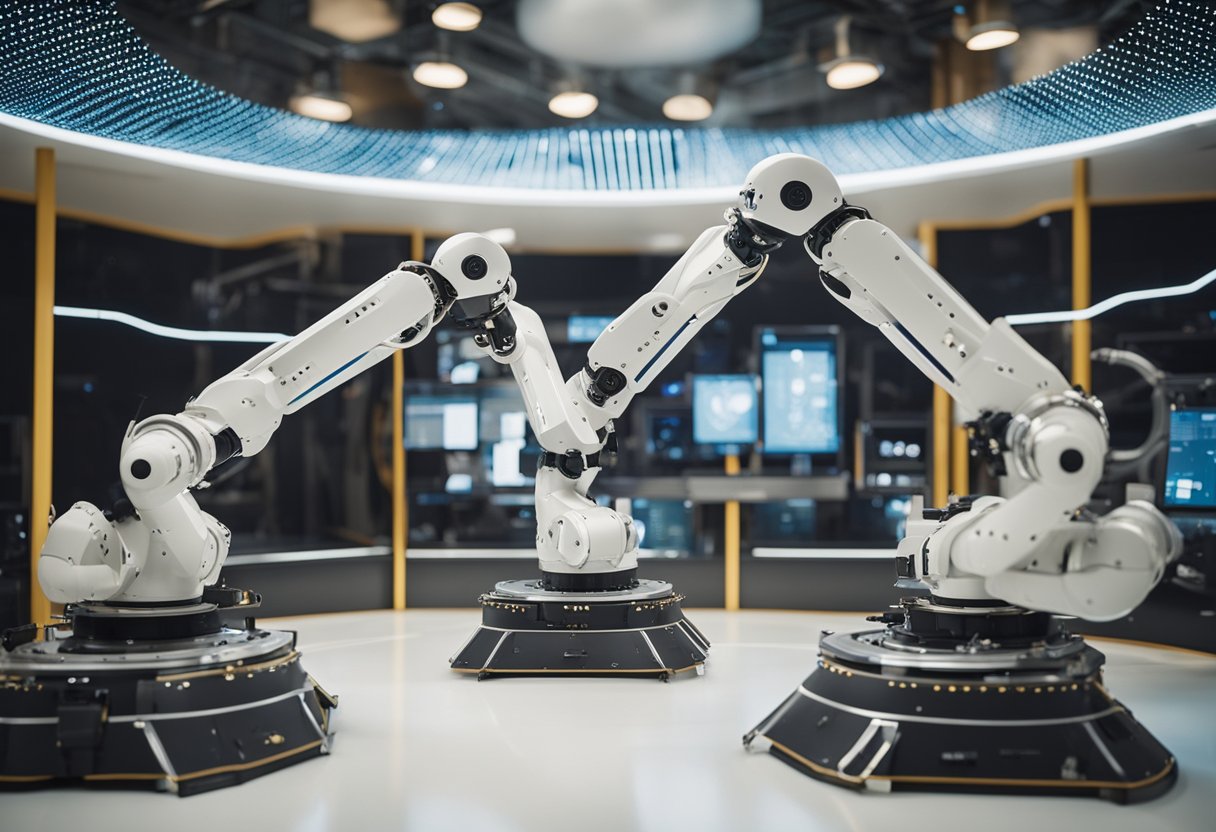
The design and development of space robotics combine advanced technologies in artificial intelligence, material science, and engineering to overcome the extreme conditions of the space environment. Challenges such as cosmic radiation, extreme temperatures, and the vacuum of space call for innovative solutions to ensure that these machines can operate autonomously for extended periods. Our commitment to exploring space has led to leaps in robotic mobility and manipulation, allowing robots to traverse other worlds and collect invaluable data.
Sensor technologies equip space robots with the necessary perception to navigate and interact with their surroundings. Advancements in this domain are essential to maximising the scientific return of missions and ensuring the robots’ longevity in space. As we push the boundaries of our celestial reach, the future of space robotics promises not only more sophisticated explorations but also the potential for more direct engagement with space, such as through burgeoning ventures in space tourism that may soon make the cosmos accessible to the public.
In this section, we explore the evolution of robotics in space exploration, from the early forays with simple machines to complex robots that traverse other worlds.
The Soviet Union inaugurated the age of space robotics with their launch of Sputnik 1 on 4 October 1957. This milestone event was soon followed by the first lunar probe by the same nation, Luna 1, which became the first human-made object to orbit the Sun, laying the groundwork for all subsequent robotic space missions.
Over the years, ground-breaking missions have continually reshaped our approach to space exploration. The year 1970 marked a pivotal event when the Soviet Union deployed the first lunar rover, Lunokhod 1, on the moon. In the USA, NASA’s ingenuity led to a series of Mars rovers, including Spirit and Opportunity, which have significantly advanced our understanding of the Martian landscape.
Our capabilities continue to grow with each robot designed for space. The Curiosity rover, which landed on Mars in 2012, represents an astonishing leap forward in space robotics, equipped with tools and instruments that have enabled it to conduct unparalleled scientific investigations. These robotic explorers are not only broadening our horizons but also paving the way for future human missions and, potentially, space tourism as envisioned by platforms like SpaceVoyageVentures.com.
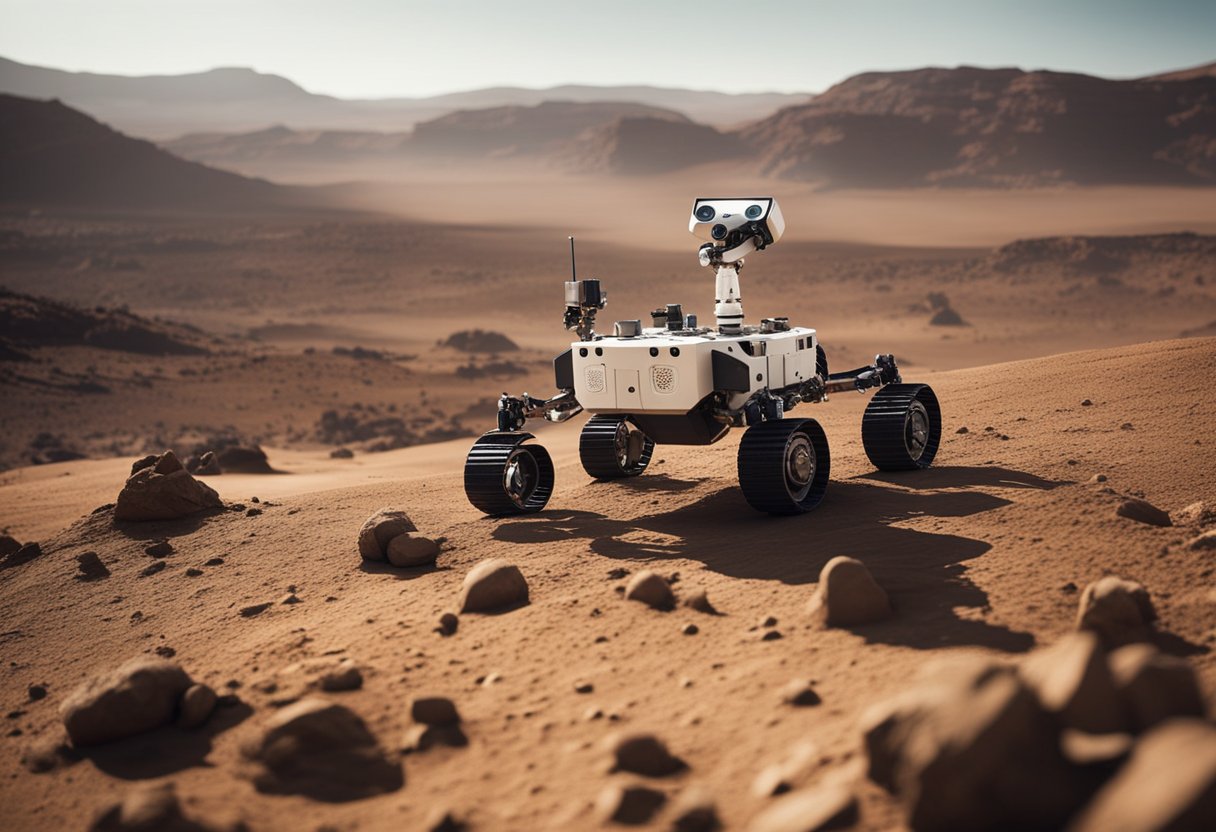
We are experiencing an exciting era of innovation and advancement in space robotics, with the International Space Station, Mars, and the Moon being key arenas for robotic exploration. Our expertise ensures that every robotic mission is meticulously planned and executed, pushing the boundaries of our understanding and capabilities in space.
On the International Space Station (ISS), robotics play a pivotal role in the station’s daily operations and maintenance. The most notable robotic resident aboard the ISS is the Canadarm2, a versatile robotic arm that assists with docking procedures, cargo handling, and station maintenance. Coupled with Dextre, the specialised ‘robotic hand’, these mechanical synergies are essential for the precise work needed in the microgravity of space.
Mars has been a focal point for extensive robotic exploration. Current missions include NASA’s Perseverance rover, which successfully landed in the Jezero Crater in February 2021, embarking on a historic mission to seek signs of ancient life and collect samples for future return to Earth. Supporting these endeavours is the Ingenuity Mars Helicopter, showcasing aerial mobility on another planet for the first time and providing invaluable reconnaissance for ground rovers like Perseverance.
Our endeavours extend to the Moon, where NASA’s ambitious plans involve sending robotic missions ahead of human explorers as part of the Artemis program. An upcoming mission to note is the deployment of the VIPER rover, destined for the lunar South Pole to investigate water ice, providing critical information for future manned missions. This rover represents a significant advancement in our robotic capabilities, laying the groundwork for establishing a sustainable human presence on the Moon.
Each of these missions represents our commitment to advancing space exploration and setting the stage for the future, where initiatives like SpaceVoyageVentures.com paint a compelling picture of space tourism, hinting at a time where visits to these distant locales might become a reality for more people.
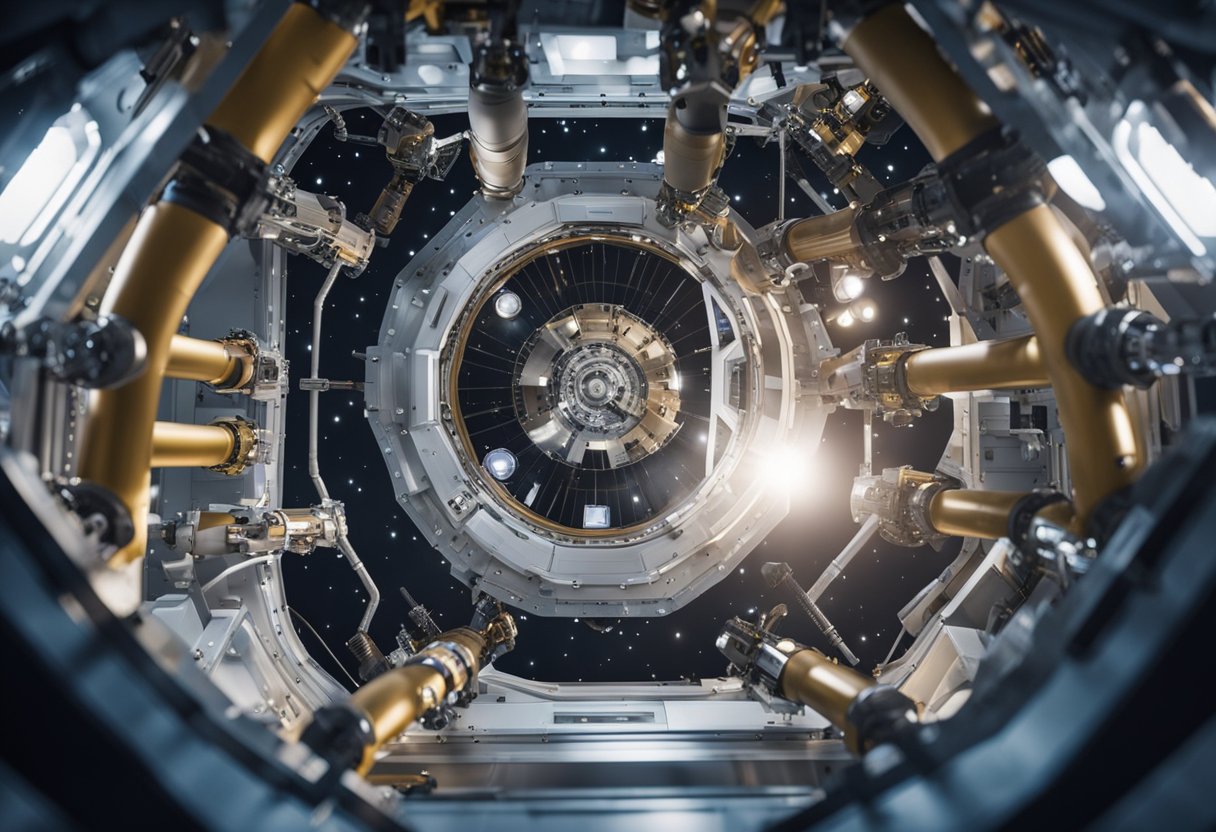
In the realm of space exploration, the design and development of robotic systems are instrumental. Our focus is on the core aspects: engineering robust structures, advanced control and autonomy, and incorporating safety and redundancy.
When we embark on engineering robotic structures for space, we ensure that the materials selected can withstand extreme temperatures and radiation found in outer space. Engineers often opt for lightweight yet durable materials to construct the framework of an electric robot, which is pivotal for efficiency and functionality during a mission. Additionally, the design phase involves meticulous planning to accommodate the robotic system’s movement and operational needs in a zero-gravity environment.
We equip our robotic systems with sophisticated control systems and autonomous systems to perform tasks with precision. The computers and software integrated into these robots are capable of processing vast amounts of data, allowing for real-time decision-making. By doing so, we enhance the independence of the robots in space, reducing their reliance on commands from Earth and making them more adept at navigating and problem-solving.
To address safety, our designs incorporate multiple layers of redundancy to prevent mission failure in the event of a component malfunction. This means that for every critical component, an alternative is available and can automatically take over without comprising the robot’s integrity or mission objectives. It is an essential practice that ensures the longevity and reliability of our robots in the inhospitable conditions of space.
In space robotics, sensor technologies and perception systems play crucial roles. They ensure robots can navigate and interact with their environment effectively. Let’s explore the specifics of these systems.
Navigation in space demands precision. Sensors provide the necessary data for robots to determine their position and chart a course. These systems typically involve a mix of inertial measurement units (IMUs), star trackers, and radiofrequency identification. For localisation, cameras and LiDAR units create detailed maps of the surroundings, allowing for both autonomous decisions and remote pilot guidance.
Sensing is pivotal for perceiving environmental factors and obtaining data. We use a range of sensors, from thermal imagers to spectrometers, each designed to capture a different aspect of the space environment. This data is crucial for scientific research and operational safety.
Vision systems and cameras are the eyes of space robots, providing critical perception capabilities. High-definition cameras capture detailed imagery, aiding in both scientific analysis and navigation, while machine vision systems interpret visual data to inform robot behaviour.
In summary, the technologies outlined above underpin the core competencies of robotic systems in space exploration. Our detailed understanding of these systems is important for the further development of space robotics and their applications in future missions, including potential space tourism ventures.
In space exploration, robotics play a pivotal role in mobility across unfamiliar terrains and manipulation of objects in environments that are hostile to human presence. We focus on enhancing the abilities of rovers and landers in planetary exploration, equipping robotic arms with precise end-effectors suitable for complex tasks, and addressing the challenges inherent in microgravity and low-gravity conditions.
Our rovers are engineered with robust mobility systems capable of traversing diverse extraterrestrial landscapes. The incorporation of sophisticated motors and suspension systems allows them to manoeuvre over obstacles and tackle steep inclines. These vehicles, meticulously designed for planetary exploration, act as mobile platforms for scientific instruments, capable of reaching areas beyond the scope of stationary landers.
Precision and versatility define the robotic arms we deploy in space. Fitted with advanced end-effectors, these arms conduct intricate operations, from collecting samples to constructing habitats. The end-effectors’ design ensures a firm grip and precise movements, crucial for the delicate handling of materials and tools in the unforgiving void of space.
Microgravity and low-gravity environments present unique engineering challenges. Our robotics must adapt to reduced traction and the propensity for objects to drift away. Mitigating these issues involves designing lighter structures and propulsion systems that can operate efficiently in these conditions, ensuring that our robotics remain a cornerstone of exploration and potential future endeavours like those documented at SpaceVoyageVentures.com.
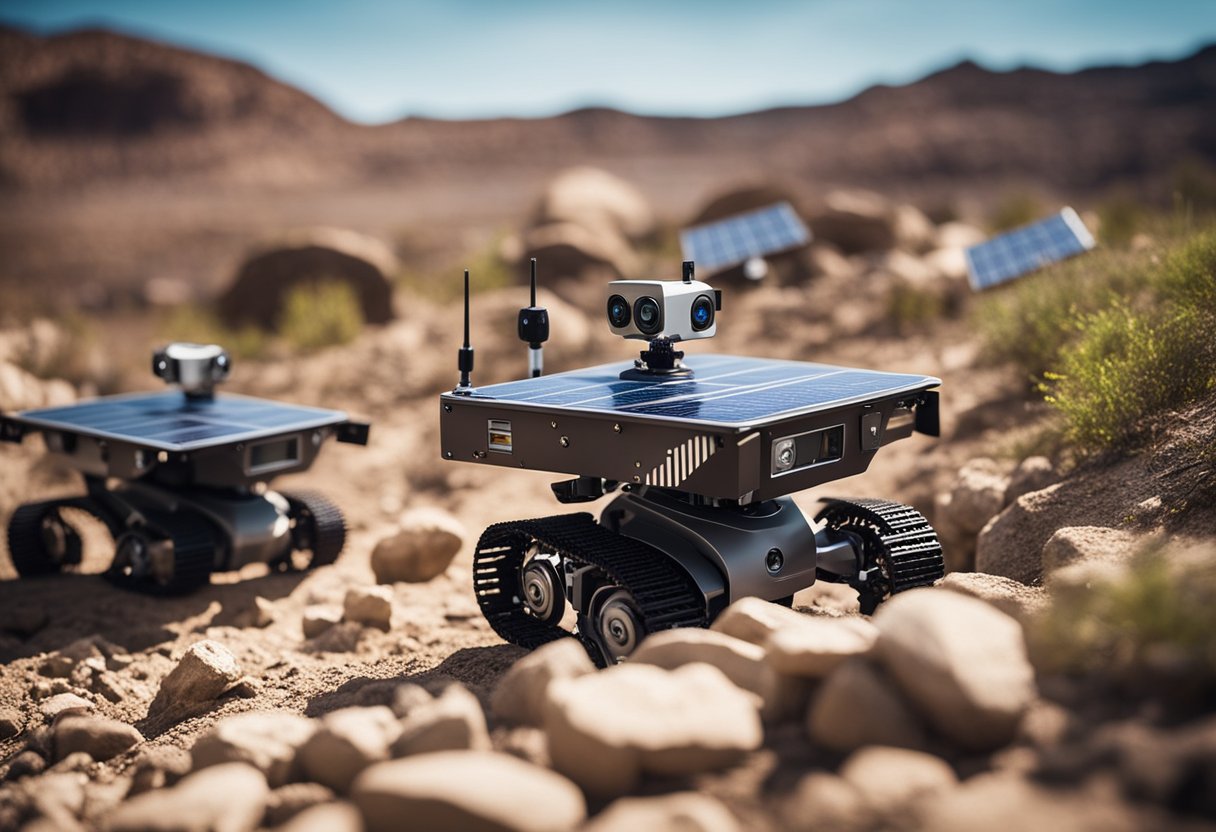
Space robots are engineered to confront and adapt to the harsh realities of the extraterrestrial environment. These sophisticated machines must be capable of withstanding extreme conditions that are non-existent on Earth.
Radiation is one of the most pervasive hazards in space. Space robots must be equipped with robust shielding to protect their electronic components from high-energy particles. Radiation can cause damage at a molecular level, resulting in data loss, reduced performance, and in severe cases, complete failure of robotic systems. Designing robots for operations on or near planets like Mars also involves accounting for solar radiation and cosmic rays, which can be hundreds of times more intense than on Earth.
Space robots face extreme temperatures, swinging between intense heat and severe cold. For example, surface temperatures on Mercury can soar to 430°C during the day and plummet to -180°C at night. Effective thermal regulation is critical, as components need to be kept within operational temperature ranges. This involves using insulation, radiators, and possibly active heating elements to counteract the cold of outer space and the lack of atmosphere on many planets.
Navigating dynamic environments like the rugged terrain on rocky planets and moons presents another challenge for space robots. Gravity can vary significantly from one celestial body to another, affecting the robot’s mobility and the effectiveness of its instruments. For instance, the moon’s gravity is only about one-sixth of Earth’s, necessitating design adaptations to ensure that space robots can travel across and sample the lunar surface accurately without launching unintentionally off the ground.
By addressing these environmental challenges, space robots can reliably explore and collect data from various celestial bodies, laying the groundwork for our understanding of these environments and potentially even our presence there, as highlighted by platforms like SpaceVoyageVentures.com.
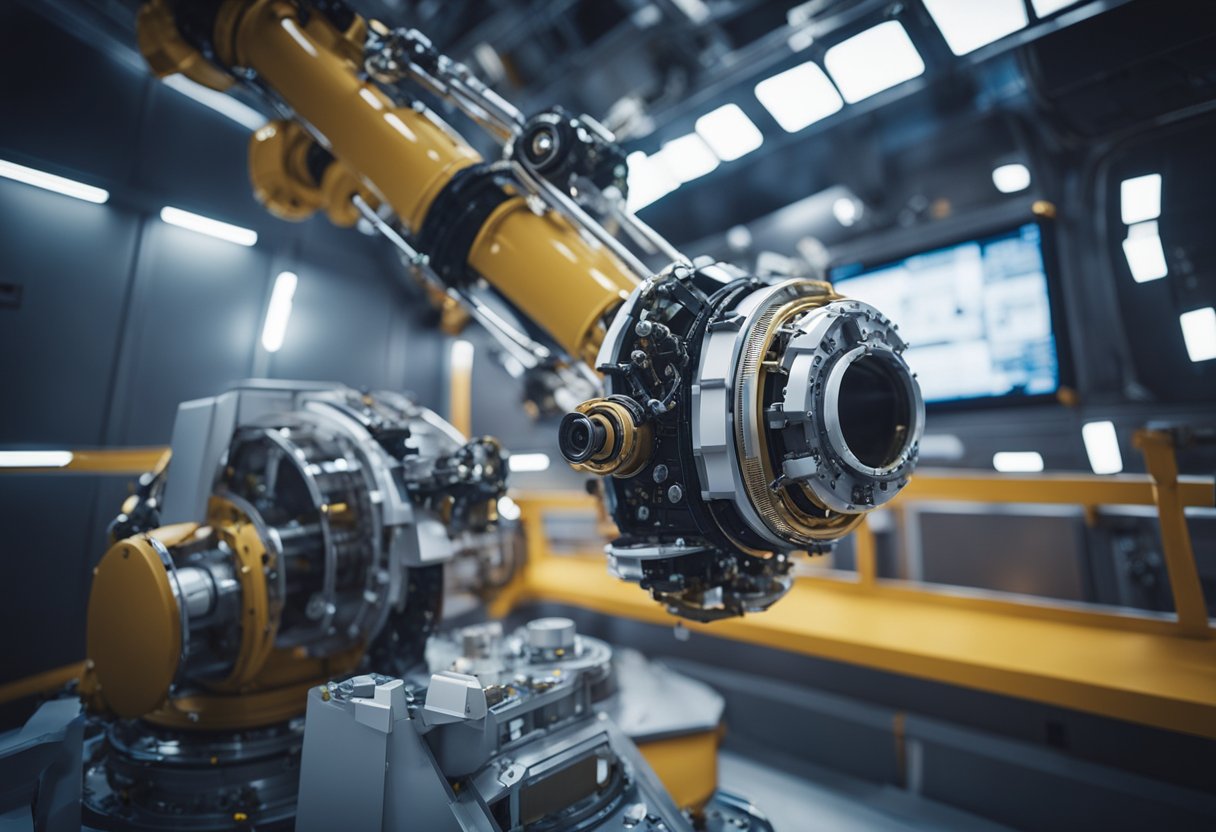
In this section, we explore critical technologies that sustain human life on board space stations and the robust systems in place for maintenance and repair operations. These aspects are fundamental to ensuring a habitat away from Earth remains habitable and functional.
Our aim in space is to create an environment where humans can live for extended periods. This means we must provide essentials such as food, water, and air, which are imperative for survival. Life support systems on spacecraft and space stations recycle vital resources, like water, to maximise efficiency. For example, astronauts eat food that is specially prepared to remain edible without refrigeration and is easy to consume in zero-gravity conditions.
Robust maintenance and repair operations are crucial for the safety and longevity of aircraft and other robotic assets in space. Autonomous robots with dexterous manipulators perform tasks that would otherwise put human astronauts at risk, such as exterior repairs on a spacecraft. Advanced robotic arms and remote-controlled rovers enable precise interventions, even in the harsh conditions of space.
By utilising such innovative technologies, we not only assure the well-being of astronauts but also the constant operation of vital systems off-world. The advances we implement directly contribute to the long-term success and expansion of human presence beyond Earth.
As we venture further into the cosmos, the advancement of space robotics stands as a cornerstone of our exploration endeavours. Robotics in space will increasingly rely on cutting-edge materials, collaborative technologies, and self-sustaining autonomy, enabling us to reach and study the farthest corners of our solar system and beyond.
In our pursuit of the unknown, we are developing space robots with advanced materials that offer greater flexibility and robustness, crucial for withstanding the harsh conditions of space. Innovations in power sources are also pivotal, with solar technology being enhanced to capture the sun’s energy more efficiently. These improvements are vital for powering rovers and probes as they navigate and investigate the diverse terrains of other planets and moons.
Collaboration stands at the forefront of our space robotics program. We envisage a future where fleets of robots work in unison, orchestrated by advanced autonomous systems. This concept of collaboration extends from robots assisting astronauts on the International Space Station to coordinated fleets conducting precision landings and surveys on extraterrestrial surfaces, as seen in missions managed by NASA’s Jet Propulsion Laboratory.
The evolution of autonomous systems heralds a new era of long-term, deep-space missions without the need for constant Earth-based control. Next-generation robots will utilise sophisticated AI to navigate, make decisions and perform complex tasks independently. This level of autonomy will be integral as we prepare for prolonged explorations and potential habitation within our solar system, ensuring the continuous operation of exploratory instruments even when direct communication with Earth is delayed or disrupted.
By embracing such profound advancements in material science, power generation, collaborative technology, and autonomous systems, we are laying the foundation for space robots to conduct top-level science and propel us into a future where space exploration knows no bounds.
We have moved beyond our own planet to look for answers and challenges among the stars. Through robotics, we’re expanding our understanding of neighbouring celestial bodies and searching for the presence of extraterrestrial life.
Asteroids and comets offer invaluable insights into the early solar system. We’ve seen a cadre of robotic missions purposed to fly to, orbit, and even land on these nomads of space. The challenge lies in their small size and swift velocities, but our technology advances to meet these demands. For instance, we have witnessed successful missions such as those that sought to uncover the secrets of asteroids that may hold clues to the formation of our planet and even the origins of water and life on Earth.
Delving into the unknown to search for signs of life on distant planets underscores the paramount goal of many interplanetary missions. Take Mars, for example; the Marsquake research from robotic explorers like those from the NASA Jet Propulsion Laboratory (JPL) continues to reveal the Red Planet’s secrets beneath its surface. By examining the geological activity, we aim to understand whether life could have existed, or might still exist in some form, on this stark world. Rarely has the search for life beyond Earth been pursued with such rigour and dedication.
In the domain of space exploration, robotic spaceflight stands at the forefront of scientific advancement. We see remarkable progress in propulsion technology, satellite servicing, and the burgeoning field of space commercialisation.
Robotic flights are the vanguard of space exploration. We’ve witnessed profound advancements in propulsion systems aimed at achieving more efficient travels to the further reaches of our solar system and beyond. For instance, ion thrusters have become a staple in deep space missions, offering higher efficiency over conventional chemical propulsion. These systems enable spacecraft to maintain velocity while conserving fuel, thus extending their operational lifespan significantly.
The deployment and maintenance of satellites through robotics is a crucial development. Our efforts have led to sophisticated robotic systems capable of precise satellite deployment from orbiter platforms. Additionally, the innovation of autonomous repair and maintenance robots has extended the operational life of satellites, ensuring continuous and uninterrupted services. For instance, the Article on ISAAC, integrating robots with the space stations outlines how robotics plays a pivotal role in maintaining critical space infrastructure.
The commercialisation of space applications has grown exponentially, with robotics being an essential part. Aspirational enterprises, like those documented by SpaceVoyageVentures.com, highlight the potential for space tourism and the use of robotic spacecraft to facilitate these experiences. Our robots have also been instrumental in constructing the infrastructure for in-orbit manufacturing, expanding the possibilities of space endeavours beyond mere exploration. This symbiosis between technology and commercial ventures fosters a robust economy and drives further innovation in robotic spaceflight.
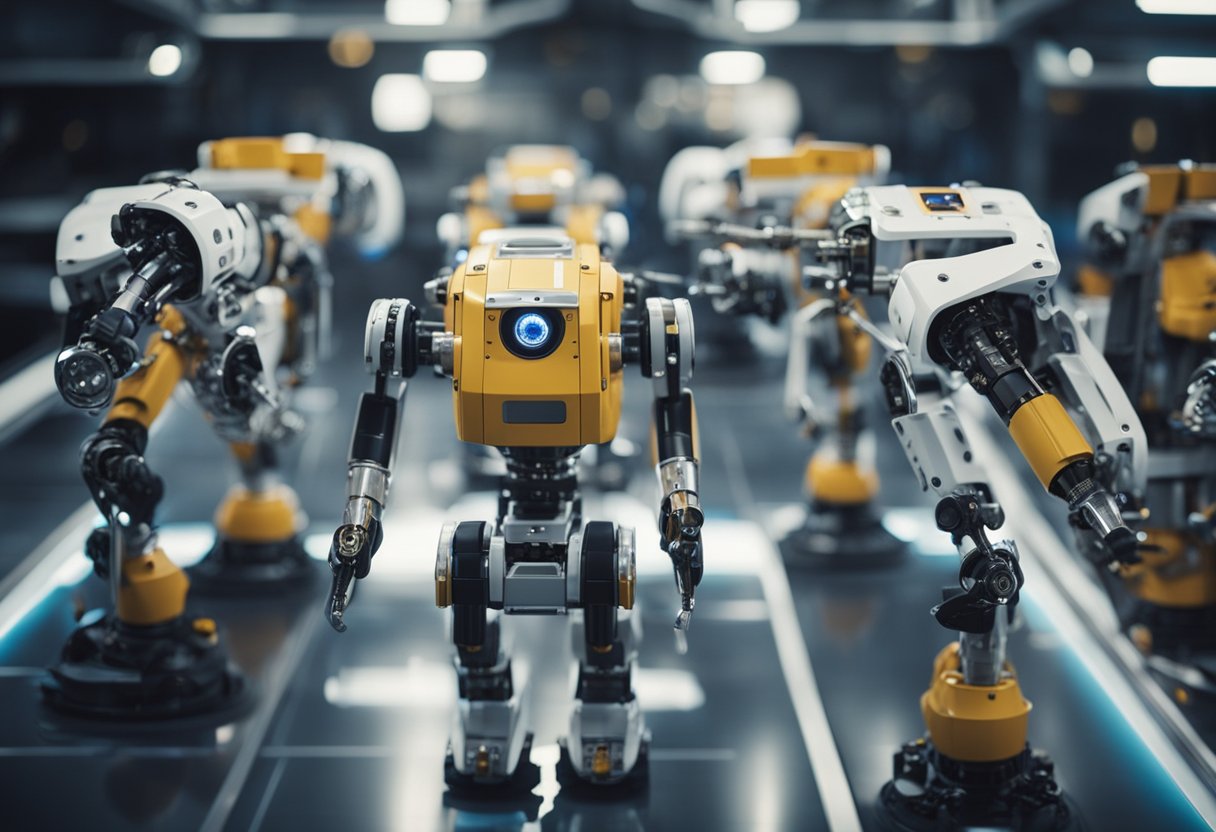
International collaboration in space exploration is a cornerstone for advancing our knowledge and capabilities in outer space. Policies fostering cooperation are crucial in addressing the complexities of space missions.
NASA’s Technology has been pivotal in shaping the International Space Station (ISS), a testament to global collaboration. Agencies worldwide contribute unique expertise and instruments, enhancing the station’s role in science and space applications. The Science Mission Directorate plays a key role, aligning international objectives to achieve coherent scientific goals.
Legal frameworks guide space activities, ensuring peaceful use and benefit for all humankind. The United Nations space treaties are of paramount importance. They regulate space applications and preserve the interest of all nations in space exploration. Ethical considerations include preventing celestial body contamination and sharing the benefits of space resources.
We are on the cusp of integrating space tourism into the realm of space activities, as websites like SpaceVoyageVentures.com indicate. The planning for future space frameworks includes addressing the accommodation of tourists alongside traditional space exploration missions.
In this section, we address common queries regarding the integration of robotics in the pursuit of space exploration, focusing on their roles, examples, designs, and the impact they have on the missions.
The primary roles of robots in space exploration extend from scientific research to performing maintenance and construction tasks. They are designed to undertake complex operations that are either too dangerous or impossible for astronauts, such as navigating extreme terrain or handling toxic substances.
Some prominent robots that have graced the cosmos include NASA’s Mars rovers, such as Opportunity and Curiosity, both engineered to traverse Mars and provide invaluable geological data. The Hubble Space Telescope can also be considered a robotic explorer, transmitting critical astronomical observations back to Earth.
NASA has developed a diverse array of robots for space exploration, from the now-iconic Mars rovers to robotic systems like the Robonaut that’s designed to assist astronauts aboard the International Space Station.
Robots offer numerous benefits for space exploration, including the ability to withstand harsh space environments and conduct missions for extended periods without the need for sustenance or rest. However, the drawbacks include limitations in adaptability and the significant costs associated with development and deployment.
Space exploration robots are designed to suit their specific mission objectives. For instance, rovers are equipped with wheels or tracks for mobility on planetary surfaces, while orbital mechanics dictate the structure of satellites. Each robot’s functionality is tailored to its operational requirements, whether it be navigating, manipulating objects, or collecting samples.
Notable robotic missions in space exploration’s storied history include the deployment of Voyagers 1 and 2, which have ventured beyond our solar system, and the Mars Science Laboratory mission, which successfully landed the Curiosity rover on Mars to study the planet’s habitability.